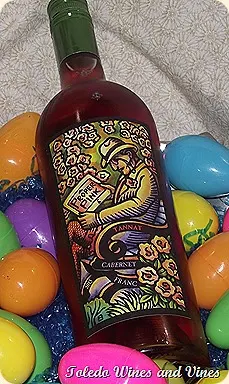What Exactly Is Rosé?
In the normal winemaking process for red wine, the juice remains in contact with the grapes during fermentation. For rosé, the juice is drained from the skins after two to three days and is then fermented in another vessel. The brief skin contact gives the wine its pink color and also means that the wine doesn’t have the body and character of red wines. They are light-bodied and usually lower in alcohol.
Bonny Doon’s Playful Rosé
According to Bonny Doon, the modern term for a proper red wine. derives from the French word, “clairet,” or light, “clear” wine, designating a certain style of darkish pink wine much favored in the Middle Ages. The Playful Pink fills the bill.
In the glass, this is a deeper color than most rosé. Instead of the melon color of a rosé from Provence, it has a red currant color. While Cabernet Franc is not unusual for rosé, Tannat is not as common. Tannat is a bold grape that is heavy on the tannins.
Is It Proper In The Glass?
This is a heartier style of rosé if there is such a thing. The wine is full-bodied, which is a surprise for a rosé. There are flavor notes of cherry and watermelon.
Proper Pink works very well as a food wine, but doesn’t completely hit the mark for those seeking a chilled hot weather sipper. It’s worth a twist of the cap for $16, especially if you are adventurous.



No comments:
Post a Comment